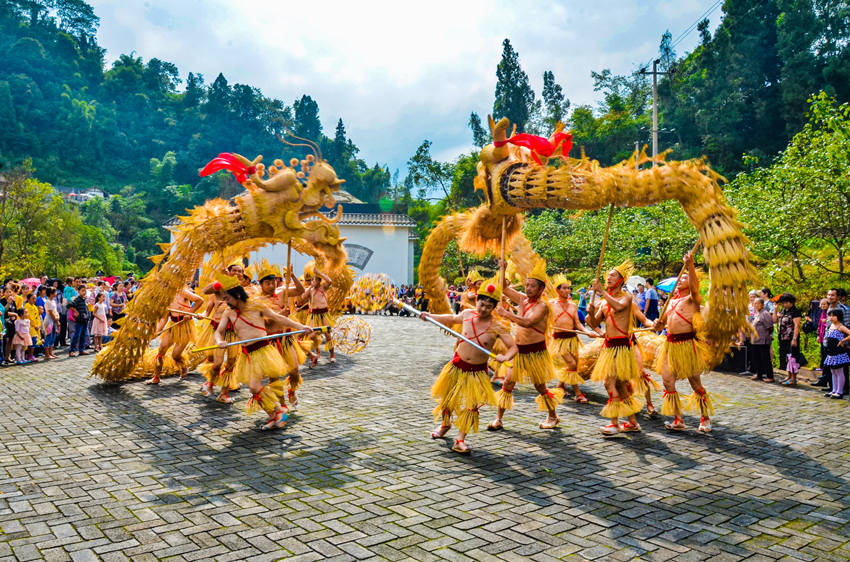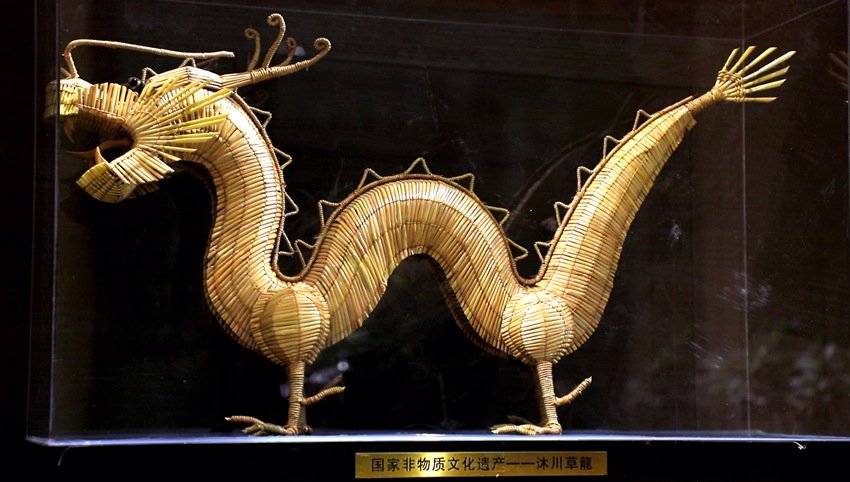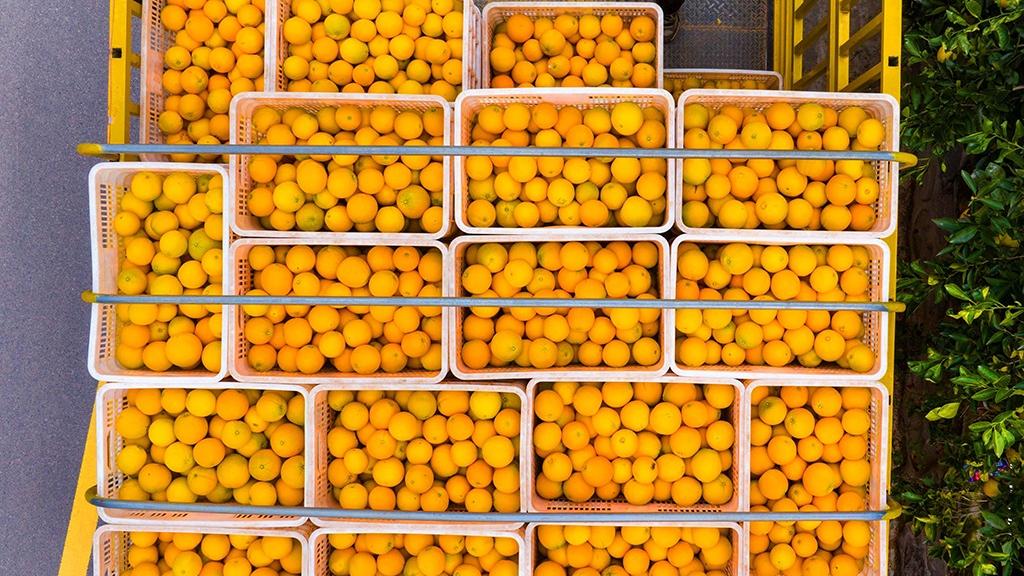Muchuan grass dragons soar amid inheritance, preservation efforts
The Muchuan grass dragon is a folk art in Muchuan county, Leshan city, southwest China's Sichuan Province. In 2008, the craft of making Muchuan grass dragons was inscribed on the list of national-level intangible cultural heritage in China.
To create a grass dragon, artisans select flawless, golden-yellow rice straws harvested that year. The straws are treated with fumigation, drying, and anti-insect and anti-mold processes to achieve shades of green and gold.
Using local bamboo strips, artisans construct a skeleton and then weave the processed straws onto it, bringing to life the dragon's features like whiskers, teeth, tongue, jaws, horns, nose, and flames through various techniques such as weaving, wrapping, and coiling.

Photo shows a Muchuan grass dragon performance. (Photo/Kong Sheng)
Chen Huanbin is an inheritor of the Muchuan grass dragon making craft. One of his standout works is a dragon which is 32 meters in length. Chen Huanbin said the head and claws are the most difficult parts to create, adding that it takes nearly two months to weave a dragon head.
Over the course of more than 30 years, Chen Huanbin has discovered his own method of making grass dragons by using bamboo and straw to craft intricate details such as the dragon's nose, eyes, whiskers, teeth, and scales, relying solely on his intuition and years of experience.
In the past, Chen Huanbin's elderly family members would showcase their grass dragons on the streets during festivals, delighting the crowds as the dragons soared through the air. Today, the Muchuan grass dragon has transcended its traditional form, embracing new possibilities and greater potential.

Photo shows a grass dragon handicraft. (Photo/Zou Songling)
Chen Huanbin and his daughter Chen Liyan have been actively exploring the innovative development of the Muchuan grass dragon making craft by introducing creative cultural products like grass-woven lamps, encouraging more people to participate in preserving and promoting the craft.
At the secondary vocational school in Muchuan county where Chen Liyan teaches, the grass dragon interest group is one of the most popular student groups. Chen Liyan mentioned that as the students' weaving skills gained market recognition, orders have been pouring in steadily.
In recent years, Muchuan county has used the "dragon" as a cultural bridge to deeply integrate intangible cultural heritage with rural tourism. Through platforms like museums, the county has created unique cultural tourism projects that attract more visitors to Muchuan. These efforts have significantly boosted local rural tourism. Additionally, the county has developed creative cultural products featuring the grass dragon, introduced immersive viewing experiences based around the craft, and launched educational programs centered around the grass dragon. These new scenarios and industries have injected fresh vitality into Muchuan's cultural tourism market.

Photo shows Muchuan grass dragons in a live-action performance. (Photo/Gao Luchuan)
Photos
Related Stories
- Young people in SW China's Chengdu swarm into intangible cultural heritage classes
- Four Chinese irrigation projects granted world heritage status
- Cave temple conservation highlighted at international forum
- China helps empower Afghan scholars in cultural heritage preservation
- Experts offer insights into global cave temple conservation
- China strengthens protection of cultural heritage amid flood season
- International forum discusses cultural heritage empowered by digital innovation
- Experts brainstorm role of new technology in cultural heritage protection
- Forum on digitized conservation of cultural heritage opens in Beijing
- Indonesian students relish intangible cultural heritage in China
Copyright © 2024 People's Daily Online. All Rights Reserved.









